Abstract
Experiments were devised to determine whether exposure to xenobiotics would cause microbial populations to degrade the compounds more rapidly during subsequent exposures. Studies were done with water/sediment systems (ecocores) taken from a salt marsh and a river. Systems were tested for adaptation to the model compounds methyl parathion and p-nitrophenol. 14CO2 released from radioactive parent compounds was used as a measure of mineralization. River populations preexposed to p-nitrophenol at concentrations as low as 60 μg/liter degraded the nitrophenol much faster than did control populations. River populations preexposed to methyl parathion also adapted to degrade the pesticide more rapidly, but higher concentrations were required. Salt marsh populations did not adapt to degrade methyl parathion. p-Nitrophenol-degrading bacteria were isolated from river samples but not from salt marsh samples. Numbers of nitrophenol-degrading bacteria increased 4 to 5 orders of magnitude during adaptation. Results indicate that the ability of populations to adapt depends on the presence of specific microorganisms. Biodegradation rates in laboratory systems can be affected by concentration and prior exposure; therefore, adaptation must be considered when such systems are used to predict the fate of xenobiotics in the environment.
Full text
PDF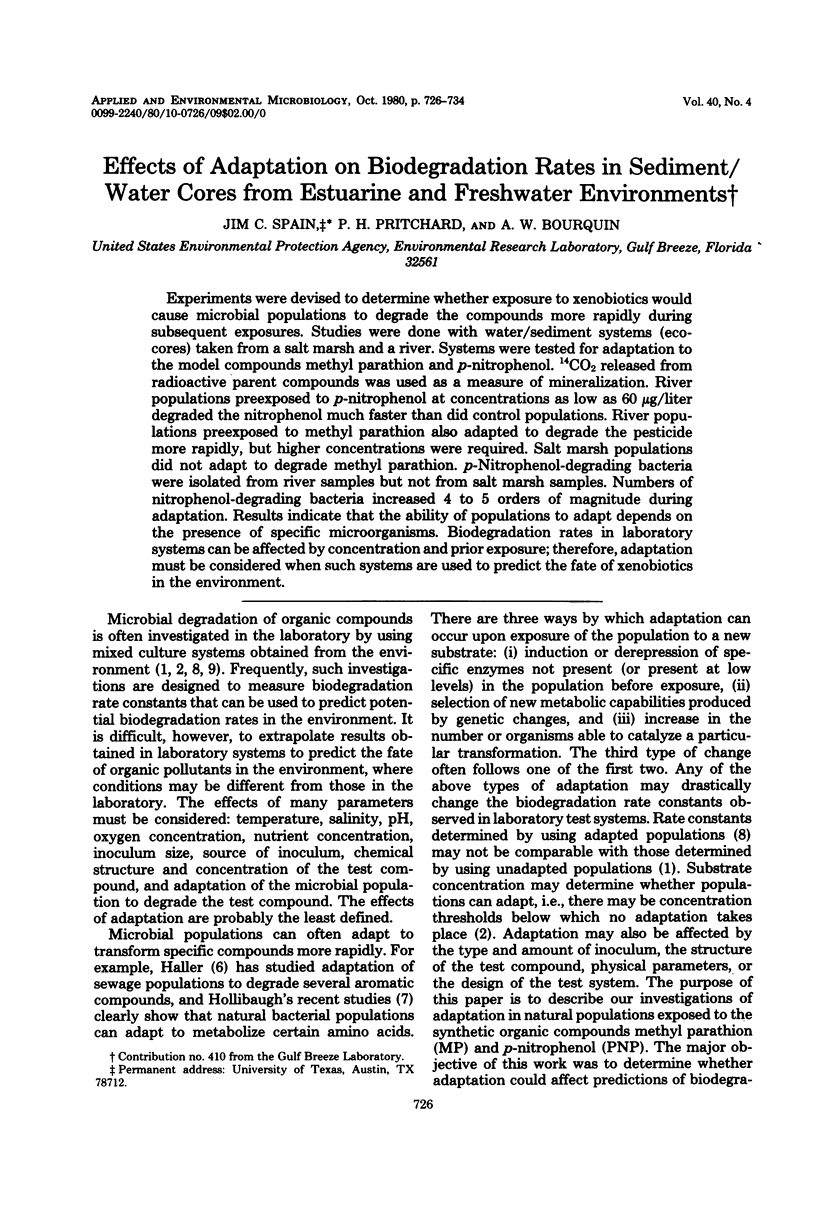

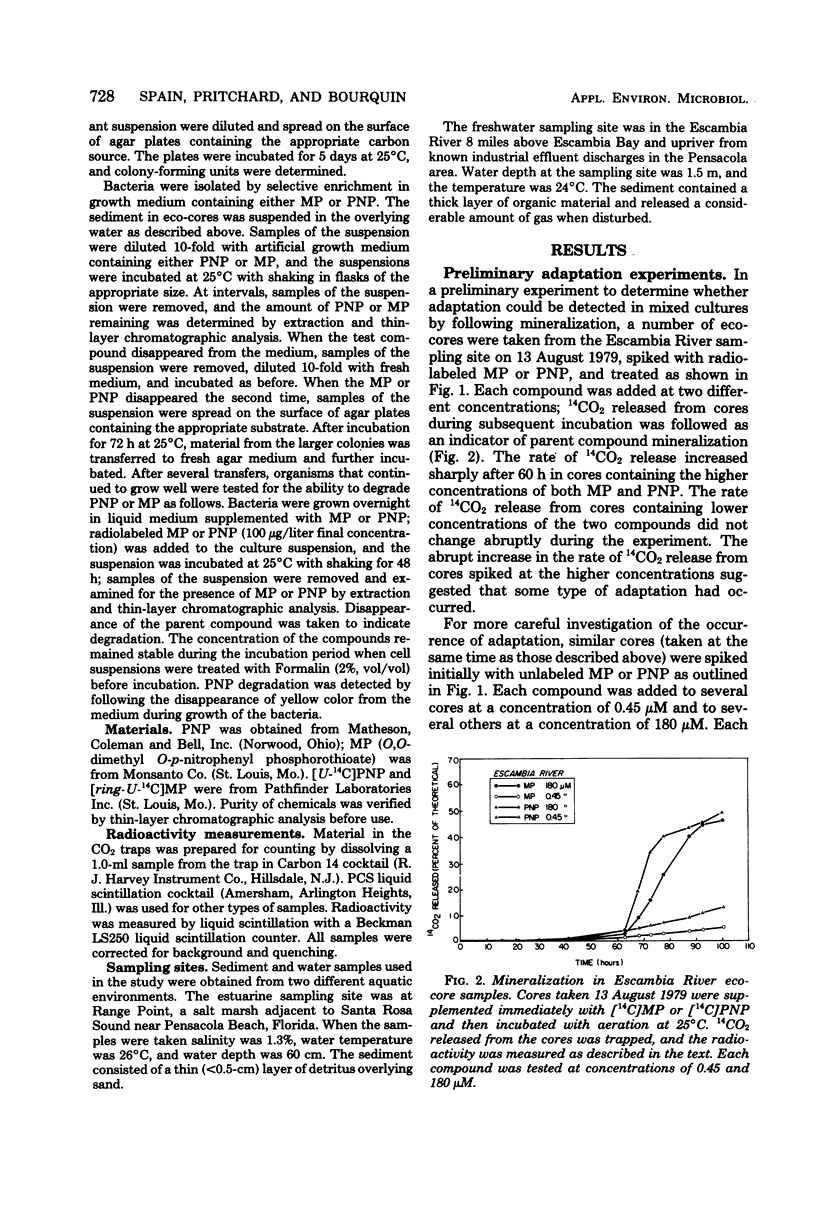
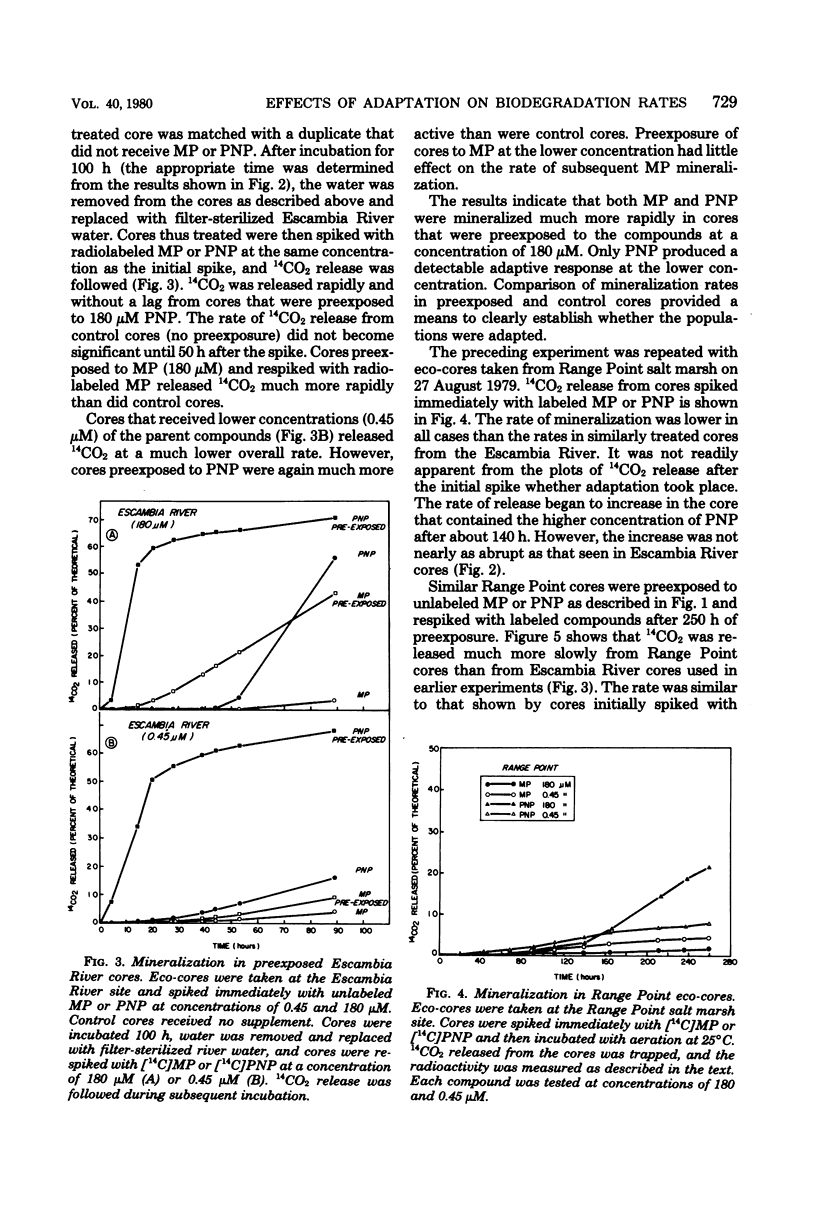
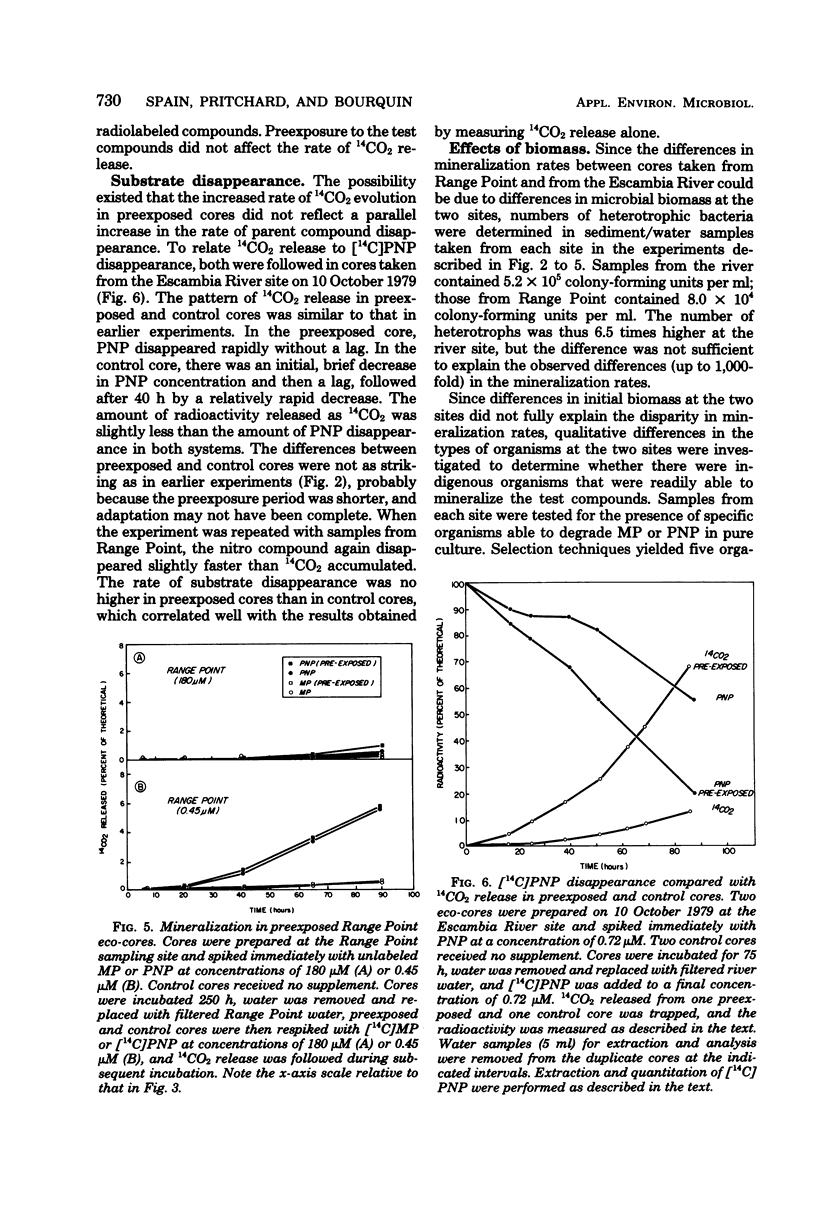
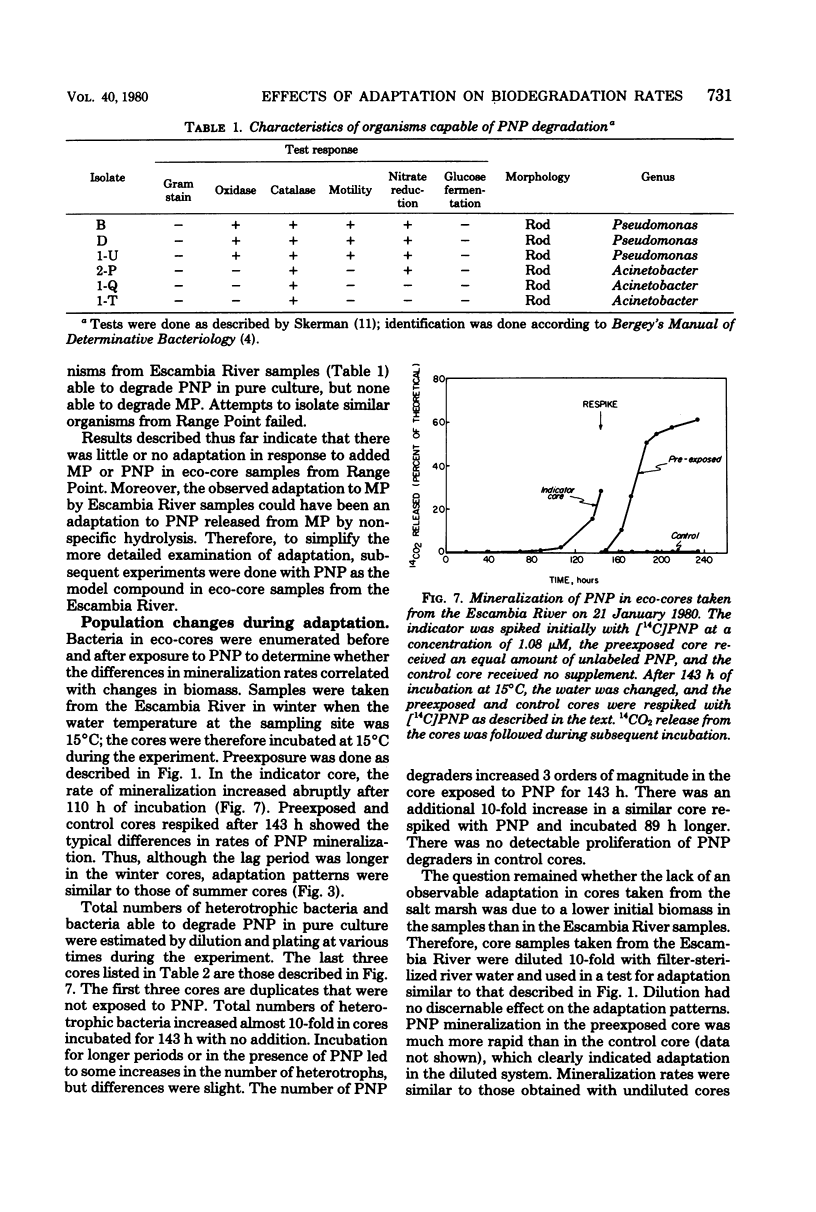
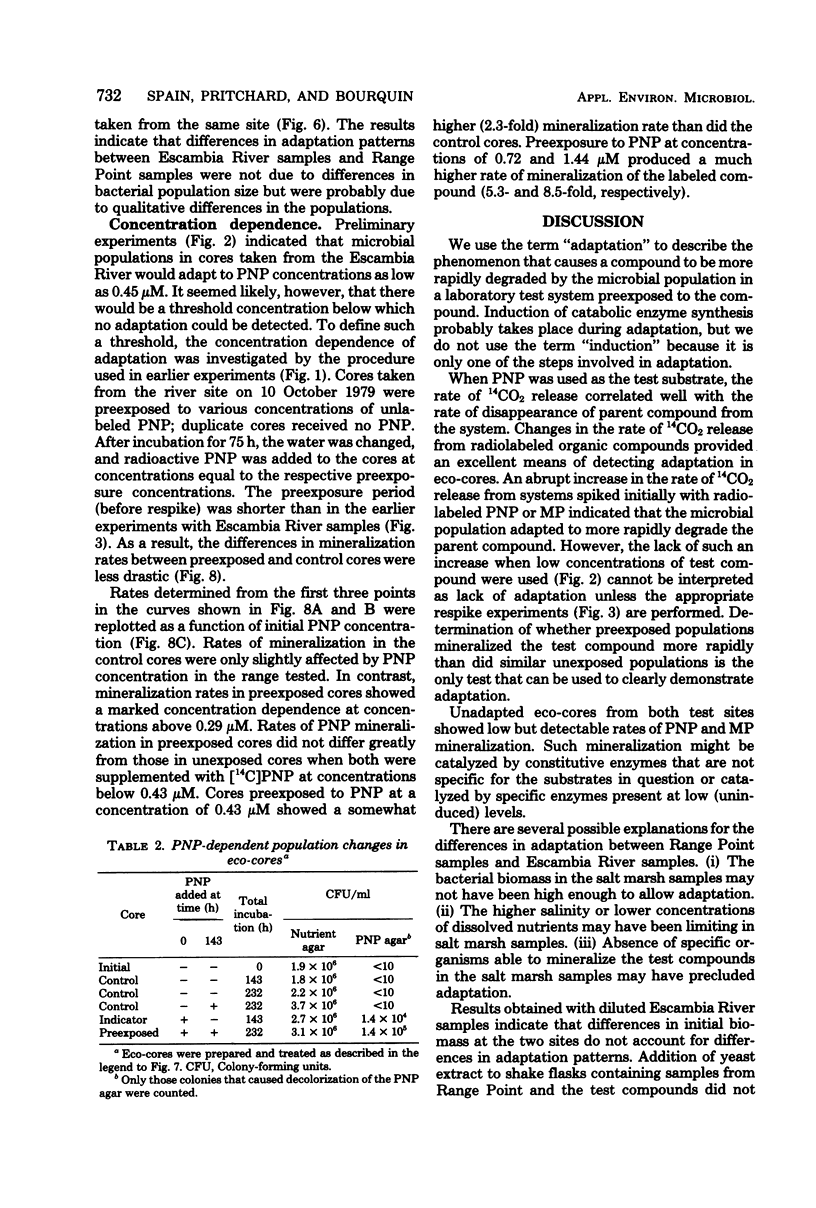
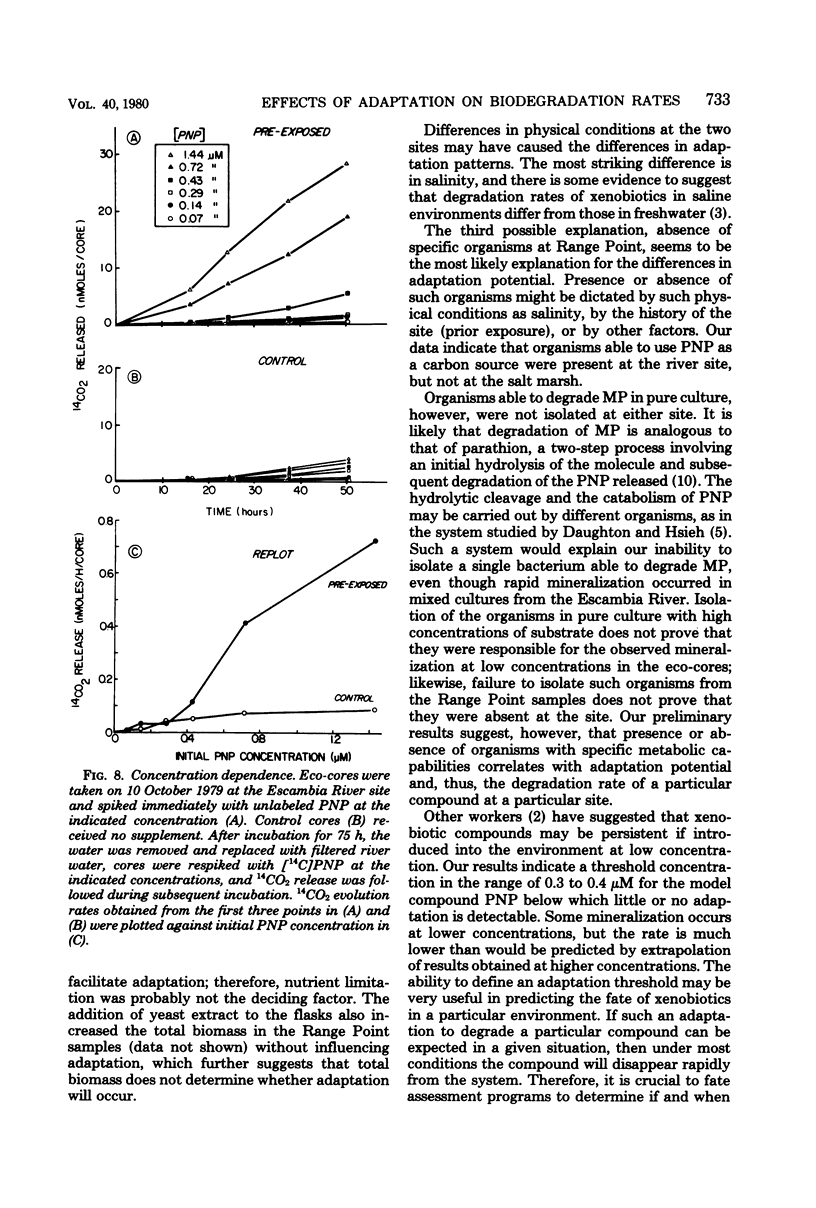
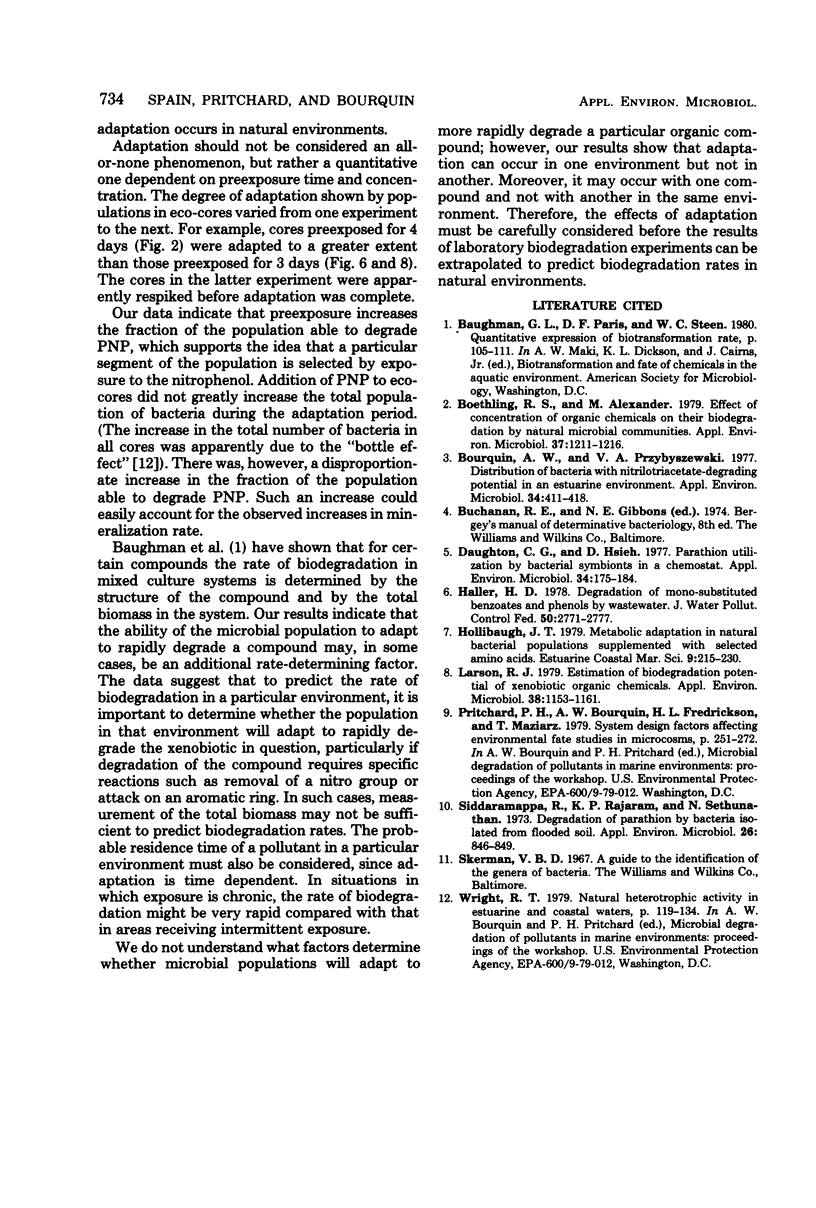
Selected References
These references are in PubMed. This may not be the complete list of references from this article.
- Boethling R. S., Alexander M. Effect of concentration of organic chemicals on their biodegradation by natural microbial communities. Appl Environ Microbiol. 1979 Jun;37(6):1211–1216. doi: 10.1128/aem.37.6.1211-1216.1979. [DOI] [PMC free article] [PubMed] [Google Scholar]
- Bourquin A. W., Przybyszewski V. A. Distribution of bacteria with nitrilotriacetate-degrading potential in an estuarine environment. Appl Environ Microbiol. 1977 Oct;34(4):411–418. doi: 10.1128/aem.34.4.411-418.1977. [DOI] [PMC free article] [PubMed] [Google Scholar]
- Daughton C. G., Hsieh D. P. Parathion utilization by bacterial symbionts in a chemostat. Appl Environ Microbiol. 1977 Aug;34(2):175–184. doi: 10.1128/aem.34.2.175-184.1977. [DOI] [PMC free article] [PubMed] [Google Scholar]
- Larson R. J. Estimation of biodegradation potential of xenobiotic organic chemicals. Appl Environ Microbiol. 1979 Dec;38(6):1153–1161. doi: 10.1128/aem.38.6.1153-1161.1979. [DOI] [PMC free article] [PubMed] [Google Scholar]
- Siddaramappa R., Rajaram K. P., Sethunathan N. Degradation of parathion by bacteria isolated from flooded soil. Appl Microbiol. 1973 Dec;26(6):846–849. doi: 10.1128/am.26.6.846-849.1973. [DOI] [PMC free article] [PubMed] [Google Scholar]


